#the common clay of the new west
Text
i love watching my coworkers get sick over and over and over and over again and still refuse to put on a mask at work because its not required anymore
#idiots#tbh they dont even refuse they just literally dont even consider doing it#like they never actually put any thought into why they had to do it before#so the possibility that it may help them now never even crosses their minds#common clay of the new west everybody
0 notes
Text
Atla Season 2 episodes in one sentence
Why is the Earth Kingdom so stupid?
Justice for Song and Songs for Sokka
Azula gets the band back together
The Gaang gets gaslit by swamp gas
In which we meet the Common Clay of the New West
If this little goblin turns out to be a one episode character I WILL start chewing the furniture
Why Zuko is like that
Pretty sure this counts as animal abuse
Zuko learns Uno Reverse
Dude where's my Sky Bison?
A damn good reason to give up pacifism
Sokka nearly breaks the world record for long distance threesome
What'll it be? A penetration joke or a bukkake joke?
Man, fuck this place. Fuck it so much.
Hello children would you like to feel? No? Too bad
Yikes I used the animal abuse line too soon
Not gonna lie I'd trade Jet for Appa any day
I have discovered why the Earth Kingdom is so stupid
Aang breaks the Avatar State while Toph breaks the laws of physics while Hakoda breaks through his son's insecurities while Katara breaks Zuko and Iroh's cover while Azula breaks the Earth Kingdom while Bato breaks just a little more inside because how's a man supposed to hold up under a multi-generational dad joke assault?
Zuko makes the wrong decision for the wrong reasons and it actually kind of works out for once (unless you're anyone but Zuko)
103 notes
·
View notes
Text
Etymological origins of the names of the regions of Finland
Suomi, Häme = Of the same origin together with "Sámi". There is no certainty of their etymology, but a common theory suggests they'd be a loan from the Baltic "žemē", meaning "land". However, modern linguists seem to argue that this is also inaccurate.
Satakunta = From Swedish "hundare", a Viking Age and early Middle Age Scandinavian war and governance system.
Pirkanmaa = Possibly from "birk", a special legal protection given to trading centers (early 1200s).
Uusimaa = Translated from Swedish "Nyland" (New Land).
Kymenlaakso = "Valley of Kymi". Kymi is a river. The word itself means... a big river.
Pohjanmaa = "Northland".
Keski-Suomi = "Central Finland".
Savo = From "Savilahti" (Clay Bay), the old name of the Mikkeli area. The origin of "Savilahti" is still debated, if it was originally savi (clay), savu (smoke), sauvo, or possibly a Sámi word for a backwater (savo, savu).
Karjala = A bit unclear. It comes from the word "karja", and if this word is of Germanic origin, then it could mean (war)band.
Kainuu = Unknown. Theories include Germanic loan "kainu/kaino" (lowlands), "kainus" (knob-headed staff, wedge-shaped object), a Sámi origin (compare gaajnuo, gaajnuoladdje (non-Sámi peasant); kai´nōlatj (Swedish coastal peasant); kainolats, kainahaljo (Swedish or Norwegian peasant)), Old Icelandic "kveinir" (an unspecified Northern Nordic people) or Proto-Norse "gainuz" (gap, jaw) -> "kainu(s)" (dragnet, sleigh).
Lappi = The most controversial of them all, I'd say. "Lapp" name usually refers to Sámi people, although they do not like this term so don't call them that. As for the etymological origin of said word, two theories: 1) a translation of an ancient Sámi tribe name "wuowjoš", from the word "wuowˈje" (wedge, patch) -> "lapp" (patch, small piece of paper). Old Finnish term for Sámi people is "vuojolaiset". 2) Meaning a remote area. The region of "Lappi" in Finland is a combination of two lands: Peräpohjola (Back of the Northland) and the areas of Sápmi (in Finnish "Saamenmaa") which are within the borders of Finland. Former land is Finnish, the latter Sámi.
Ahvenanmaa = "Perch land". Two theories: either it comes from Proto-Norse "Ahvaland" (water land?), or the Finnish form is the original.
In Swedish in the cases where it differs from the Finnish origin:
Österbotten = "East Bottom". As opposed to West Bottom, Västerbotten, on the Swedish side of the Baltic Sea.
Kajanaland = From the historical Russian name for Kainuu, "Kajánij/Kayániy". Meaning unknown, though some say it means a land in which it is difficult to travel. Likely, it is connected to the word "Kainuu".
Tavastland = Apparently from Old Norse "Tafæistaland" (ᛏᛆᚠᛋᛏᛆᛚᚭᚿᛏ). Origin unknown, theories say the "ast" part could somehow be connected to Estonia.
Finland = Hahaha. Unknown. Old sources use the word "finn" and variants to refer to both Sámi and Finns and you never really know what's the intention (think of Finland and Finnmark). Theories say that the origin of the word could be connected to Germanic words such as "finthan" (find), "fendo" (wanderer).
Åland = "River land". Two theories: either it comes from Proto-Norse "Ahvaland" (water land?), or the Finnish from "Ahvenanmaa" (perch land) is the original.
97 notes
·
View notes
Photo

The Unsettling Sound
The Puget Sound is an unsettled sea that lies above the tectonically active western edge of the North American Plate. This large body of frigid water is separated from the Pacific Ocean by the Olympic Mountains to its west and the Cascades to its east.
Glaciers crowded into the Sound during the last ice age, advancing from the north. When they retreated some 13,000 years ago they left behind deep deposits of interglacial sediment. These sand and clay remnants, in turn, were carved by frequent rain and sea erosion to form high, unstable coastal bluffs, which were soon blanketed by dense evergreen overgrowths of cedar, hemlock and fir, and undergrowths of alder, blackberry and fern.
As erosion progresses this cover slides from high bluffs in slow cascades that often take decades to complete from hilltop to shore. The process is sped up when the northwest rains are heaviest. Landslides can carry trees and their understory to the beach in an instant. Once arrived on the shore, the upended forest enters the marine ecosystem, where it functions as nutrient, shelter and barrier.
In the last centuries, human structures have been added to this tumult. Houses perched on bluffs afford spectacular views and command high prices, but they face the disturbing prospect of being splayed across the beach following a prolonged downpour. Slides in the Northwest earn frequent headlines, and were even the subject of a popular book and film set on the slopes of Queen Anne Hill.
Much hilltop construction in the area occurs with little immediate awareness of the role erosion plays in maintaining both the geological and biological integrity of the Sound. A common response to the inevitable is to line the bank with black basaltic stones quarried from ancient lava beds. The proliferation of these bulkheads throughout the Puget Sound has resulted in a phenomenon called “shoreline hardening.” According to some government statistics, approximately 30 percent of the Sound’s shoreline is now armored with stone and concrete reinforcements.
This happened along the beach where my family has lived for nearly a century. in the 1970s and 80s, property owners piled stone bulkheads to shore up against sliding —attemtping to fix in time something that’s always in flux.
The results of our obstinance has been devastating. Within years this beach began to lose much of its value. As a child, I can remember clawing a hundred Native Littlenecks from the sand and clay beneath beach rocks. We let these clams sit for a couple of hours in a bucket of seawater. My grandparents taught us to sprinkle in cornmeal so they could spit out stomach sand as they fed. Once full, they were transferred into a steaming pot where they open latticed shells to offer up their tenderness. Today I’m lucky if I find a single Littleneck after 30 minutes of raking.
Whenever I visit the Sound, I think of Susu and Chum, who were privileged to live on this shore and loved what it could yield to any of their grandchildren willing to put some time into it. They left us 20 years ago, and a new generation of family has built modern homes on the foundations of those Susu and Chum left behind.
In time, ownership may be handed to successive generations, or we might drift away, passing the beachfront to someone with no memory of what it meant to a family that gathered there. And while the Sound may retain much of its scenic beauty, this too is fleeting. The tides will rise and fall revealing familiar stretches of rocks and sand, again and again, and still something will always remain unsettled until it’s gone.
115 notes
·
View notes
Text

You gotta remember that these are just simple farmers. These are people of the land. The common clay of the new West. You know... morons.
The Town of Rock Ridge - Blazing Saddles (1974)
#blazing saddles#cleavon little#gene wilder#david huddleston#john hillerman#mel brooks#a black sheriff#johnson#a town of assholes#70's western#70's comedy
15 notes
·
View notes
Photo



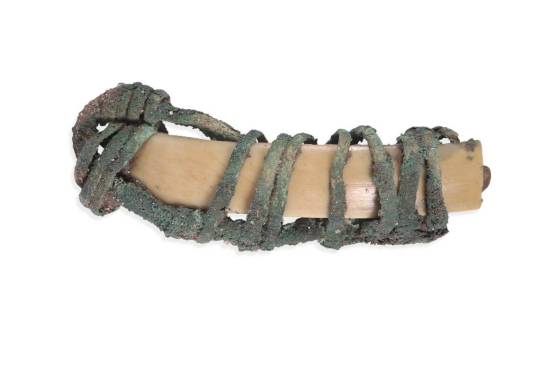
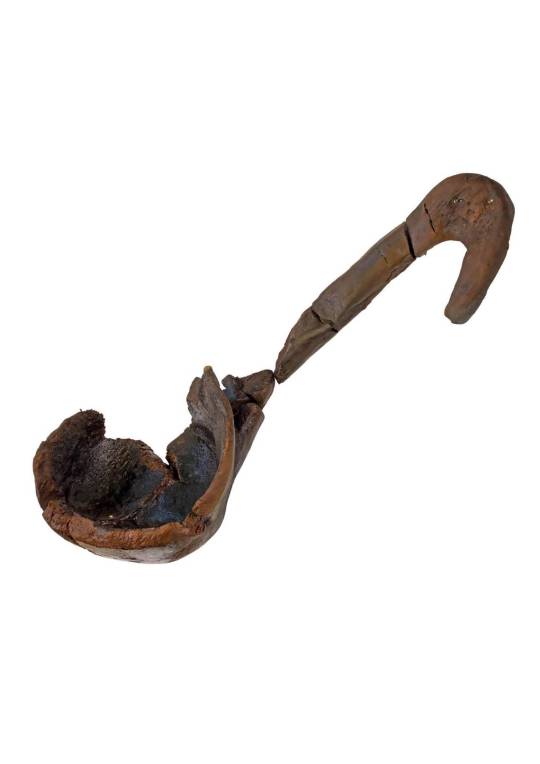
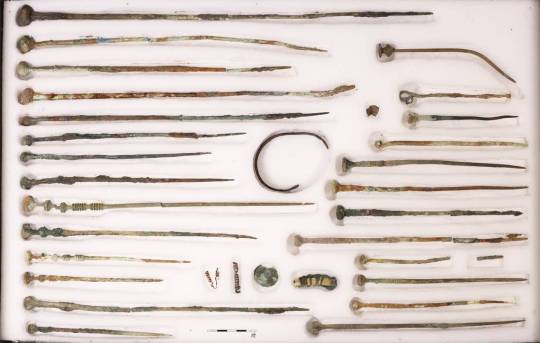

A 3,000-Year-Old Wishing Well Uncovered in Germany
Close your eyes. Make a wish. Toss a coin into the water.
Whether it’s Rome’s iconic Trevi Fountain or a water feature at the nearby mall, wish-filled waterworks are common — but perhaps not a new phenomenon.
Archaeologists in Germering unearthed a 3,000-year-old wooden wishing well, the Bavarian State Office for Monument Protection said in a Dec. 20 news release. Unlike today’s coin-filled fountains, this well was filled with over 100 well-preserved artifacts.
At the bottom of the 16-foot well, archaeologists found a variety of items that appeared intentionally placed. Considering the depth of the well, the artifacts may have been ritual offerings or religious sacrifices made during a long drought, archaeologist Marcus Guckenbiehl said in the release.
Over 70 finely crafted clay vessels were unearthed from the well, with photos showing the decorated cups, pots and bowls. Experts noted these ceramics were not everyday items.
The excavation also revealed 26 bronze robe pins at the bottom of the well.
A bracelet, two metal spirals, and four amber beads were all recovered from the well, too.
Additionally, archaeologists found a mounted animal tooth and a wooden scoop inside the well. The number and quality of items indicated the artifacts did not fall into the well accidentally, experts said.
The wishing well is one of over 70 found at the excavation area – but the only well found with relics inside. The findings are extremely rare, archaeologist Jochen Haberstroh said in the release.
Archaeologists are excavating the site before the construction of a letter distribution center. The wishing well and its trove of artifacts will be studied further to gain more insight into the daily life of settlers 3,000 years ago.
Germering is about 10 miles west of Munich in the southern region of Bavaria.
BY ASPEN PFLUGHOEFT.
#A 3000-Year-Old Wishing Well Uncovered in Germany#Germering#ancient artifacts#archeology#archeolgst#history#history news#ancient history#ancient culture#ancient civilizations
29 notes
·
View notes
Note
(Okay so I know I’m terrible at actually responding to your answers to these, but just know I really do enjoy reading them!!)
I know you make a lot of Pinterest boards, and often post pictures saying stuff like “The people from [one of your stories’ worlds/countries/etc] would wear this” do you have any place’s traditional/current popular fashion style mapped out in your head any? Also given any thought to hairstyles or jewelry maybe? 👀
OMG HIIIIIII I CAN'T BELIEVE I MISSED THIS! :O
And yes, i absolutely have specific ideas for AWIA stuff especially, just bc the different styles is important for worldbuilding and character design especially. for instance:
ANDANTHE
Andanthe's clothing is largely inspired by South Asian (and sometimes Middle Eastern) fashion, particularly in places like India, Pakistan, Palestine, et cetera, but with a minor twist bc andanthe is set in a more deciduous, foresty-new-england type area. Andanthe's national color is vivid green, so Andanthian royalty in particular wear a lot of green, which can be dyed with dandelions and other natural dyeing materials (and gold is prevalent too, bc well. royalty.)
So what i mean when i say Andanthian fashion is South Asian inspired is the emphasis on flow, layered fabric, and printed patterns-- e.g., this goooooorgeous look from Vogue India fashion week (2016)-- the nice, rustic yet earthy color tones, the regality of the fabric and its swish, the way the outer covering of the garment alludes to a sari and really shows off detailed patterning in terms of print. so yummy.

(Small note tho, it's important that Andanthe has quite lush and vibrant use of color in their fashion, because the kingdom of ilwich also has a thing for green.)
keep in mind though that despite this, Andanthian fashion is also a bit... utilitarian. there's the natural form and silhouette of the fabric, but there's also the sharper edges that leave little show of frivolousness. the high, conservative yet elaborate collar, the nice fancy but straightforward belt. like it's pretty, but it's cool. and especially for characters like morgan, who prefers more masculine clothing to anything else, this kind of rigidity benefits her style. like "yeah bitch, we could totally beat your ass in battle. but also we got that shit on." see below for reference example.
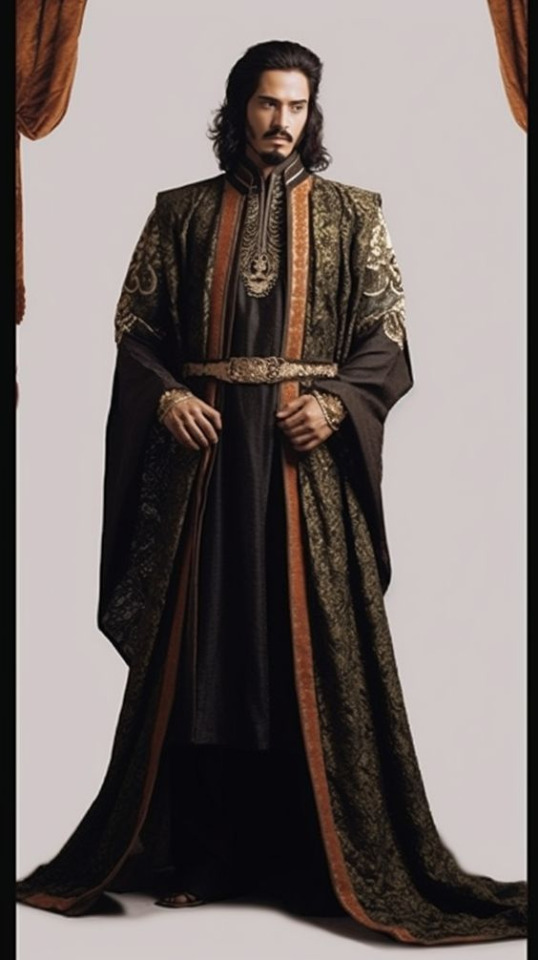
THE ANWHINES
Okay so one thing about the anwhines is that like andanthe they like straight lines and silhouettes that have a little flow, but unlike andanthe, they don't prioritize layering lavish fabric. they do absolutely love working with geometric shapes. see below: the lovely rectangular box of the overcoat and the linear shape created by the straight dress. another BIG important thing is bold geometric patterns-- because as you can probably guess, alot of the Anwhine inspiration comes from West African culture and Caribbean culture. it's no less intricate than andanthe's, but definitely less dainty. also very yummy.

Another important thing to know about the anwhines is that their national color is blue. there's the nice, easy-going cerulean blue that alludes to their lovely and idyllic oceans, but also a dark and no-nonsense navy blue usually worn by royalty. white accents, like cotton/linen lace or collaring, is also common.
there is also an important accent of white pearl and shell used in their fashion, because well. why wouldn't you make shell and pearl jewelry if you're a nation comprised of isles floating around in the sea? it's too easy. they don't mind gold bangles or wooden hair accessories either tho. Also, clay, because clay beads are fun! and because i love Black hair and all the pretty stuff you can do with it, having pretty jewelry in your hair is heavily important. see below for examples.

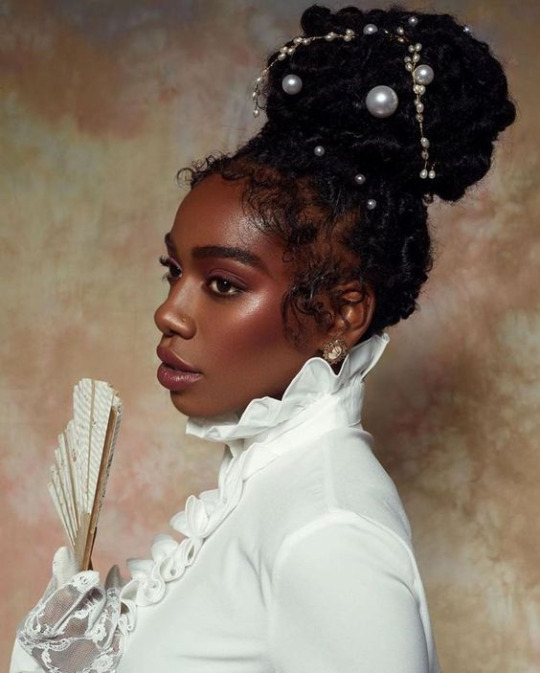
MONERVA
okay, i'll be honest, monerva's cultural fashion is a lot less real-world specific and a bit more eclectic. it's for a reason, tho; i mean, neither andanthe or the anwhines are homogenous cultures by any means, but monerva is very forward thinking and focused on trendiness and innovations. which means they do whatever the fuck they want and can be inspired by any number of cultures, because it depends on personal style. monervians in general are very focused on looking cunt and showing off. as they should!! so if you're planning on inviting a monervian to your party, expect them to show up to the function in some shit like this.

monervians looooove lace, linen, and the very regal yet soft white that those materials bring to the table. they love frills, folds, ruffles, and massive silhouettes--and extra points are given if it's constructed in a way no one's ever thought of before. in terms of colors, monervians love light and frivolous pastels (pinks, lavenders, blues). they live in what you might traditionally imagine a fairy kingdom to reside--that is to say, a lavish and disorienting colorful forest glade-- so they use flower and plant-based dyes and incorporate flowery embroidery int their lacing and patterning (see below). unlike the last two kingdoms, there's less of an emphasis on printed patterns on clothes unless it's a personal style thing. and in terms of jewelry, they love precious stones, crystals, and mineral pieces. bonus points if they're shiny and a little gaudy.
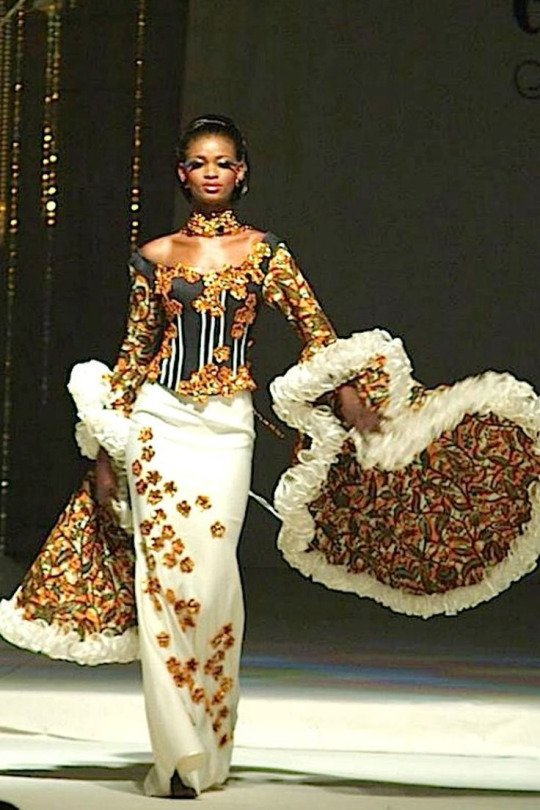
ILWICH
Out of all the kingdoms in this story, (there are more than 4, i'm just too lazy to put them here) Ilwich is the one that looks the most medieval like. I mean, the world of awia is a little anachronistic because fuck it i do what i want, but the idea is that the aesthetic dances loosely with medieval era technology, foods, clothing. ilwich though, is the most closely tied to that medieval eastern europe aesthetic. they, as i mentioned earlier, have a penchant for green like andanthe, but because ilwich is located in marshy wetlands and deep underground castles carved near and underneath mangrove-like trees, their colors reflect the more dull nature of their surroundings.
Another important thing about ilwich-- they are a culture that is very closely tied to the worship and mythos of the old dead gods. i might have mentioned that the pantheon that existed before the concrete memory of fairies had ever been formed kinda cannibalized each other to extinction. the link between the gods and fairies is caput. Mostly. but some remnants of the old religion remain, and many of it is guarded by ilwich acolytes that chill around in the catacombs. to reflect this, ilwich garb happens to be more simple and more pious: simple linen or wool fabrics, with little excess or bright, printed fabric. don't mistake less simple with boring, though; what they lack in pattern and emroidery, they make up for in layering. due to it's marshy background, ilwich loves dark greens and blacks, dull sages, rustic browns, and dusty off whites. However, some nobility/royalty add a bit more flair; case in point:

like monerva, they like using nature-y elements in clothes, but rather than mimicking bright, lush flowers, ilwich mimics decaying leaves, cobwebs, and dark moss. cosmo sheldrake would love these weirdos.
and another thing: because the marshlands are typically chilly and much of ilwich is underground, ilwich fashion includes many layers and furs. Again, a lot of browns and off white furs are preferred.
Anyways! rant over. hope that answered some of your questions :D
2 notes
·
View notes
Photo
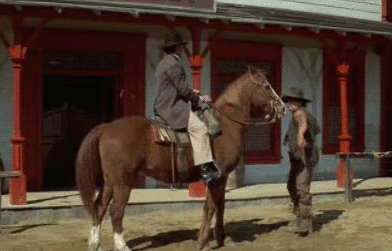
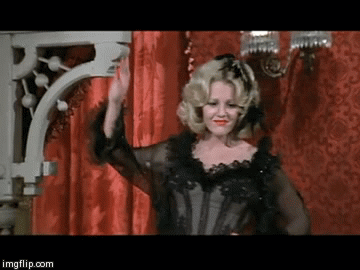
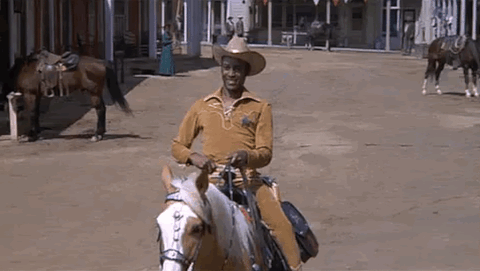



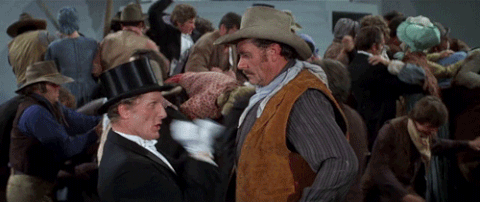

18) Blazzing Saddles
What did you expect? "Welcome, sonny"? "Make yourself at home"? "Marry my daughter"? You've got to remember that these are just simple farmers. These are people of the land. The common clay of the new West. You know... morons.
Release Date: February 7th, 1974
Dir.: Mel Brooks
#Prettywitch's Favourite Movies#blazzing saddles#mel brooks#70s film#70s comedies#this movie is pretty damn funny
8 notes
·
View notes
Video
youtube
"You've got to remember that these are just simple farmers. These are people of the land. The common clay of the new West. You know ... morons."
0 notes
Text
Bengali Story Book Online Shopping, Ananda Publishers Online Store
Controversial psychologist Dr. Prithviraj Burman is from London. He intended to produce a movie about his unusual therapy as a way to show himself to the world. He decided to write about ‘Multiple Personality Disorder’, a condition that affects Mouli of Seemantpur. In Mouli's adolescent years, the illness first became apparent. Her molestation, an enigmatic rainy night, and certain teens like Jishnu-Soumya-Rudra were all connected to that episode. While Mauli was still healthy at the time, the sickness started to surface again during her marriage.
If one is into bengali story book online shopping, Krishnendu Mukhopadhyay’s Papbidhhya, is just for him. It takes the reader through a journey of emotions and consciences.
Charida is a small hamlet of Bengal’s Purulia known for ‘mukhosh’ or mask making. The mask is an essential component of the Chhau dance, a well-known traditional mask dance form of West Bengal. Bengal masks are renowned for their expert workmanship. Wood is a common material for masks. Gomera masks from Dinajpur, Gambhira dance masks from Malda, Gilded masks of Kushmundi, and Bagpa dance masks are among the wooden masks from Bengal. In the traditional North Dinajpur Gomera dance, sponge wood masks are worn. Popular Shola masks come from Murshidabad. Kumartuli in Kolkata is well-known for its statues and masks, The features on the face of the masks are fashioned of clay. For a very long time, the Ghurni clay masks in Nadia district served as the famous centre of clay art. ‘Shiber Mukhosh’ is a well-known clay mask in Nabadwip. A common folk mask form called a bamboo mask was invented in West Bengal's Dinajpur District. It was made from a single bamboo stick. It resembles a tribal mask. Dokra masks are very popular metal masks. It is a distinctive West Bengal folk art form.
Masks represent a distinctive artistic expression. They represent characters whose mystery-glory is expressed through these objects of art. Pseudo-faces are found in a range of hues and materials. The trends set by local administrative bodies, traditions, the period, migration and settling of the artist society, market trends, shifts in the techniques, museum artefacts and displays helped to establish the detailed basis of the Bengali mask craft. The mask art of Bengal has a unique depth and shades, thanks to this particular art form in diverse materials like wood, clay, paper, metal, etc. The vast and fascinating world of masks, their diversity has been explored via literature and photography in the book Banglar Mukhosh (Banglar Masks). This integrated form of ‘Charu-Karu’ folk art and masking technique adds a new dimension to the cultural sophistication of Bengal. Look for the title in the ananda publishers online store, www.anandapub.in.
0 notes
Text
Tips for Keeping Your Trees Healthy in the West Island
Trees are an integral part of our ecosystem and play a crucial role in maintaining the balance of nature. They aesthetically enhance the curb appeal of our homes and provide shade and privacy, thus making them a valuable asset. It only makes sense for us to take proper care of them. If you live in the West Island, you know that there are many challenges associated with tree health care. However, with the right knowledge and care, you can ensure that your trees thrive and remain healthy. In this blog post, we will share valuable tips for keeping your tree health care in the West Island.
1) Pruning And Trimming:
Pruning and trimming should be done regularly to maintain the health of your trees. It helps to remove diseased and damaged branches and encourages new growth. It also helps to promote air circulation, which is essential for healthy growth. It is essential to hire professional tree care services in West Island to ensure that the pruning and trimming are done correctly.
2) Watering and Soil:
One of the biggest challenges in maintaining healthy trees in the West Island is drought. Providing sufficient water is crucial for the survival of trees, especially during the summer months. The soil in West Island is usually clay-based, which makes it challenging for water to penetrate deep into the roots. Adding mulch around the trees helps to retain moisture and suppress weeds. It is also essential to ensure that there is proper drainage to prevent waterlogging.
3) Pest Control:
Pests and diseases can cause significant damage to trees. Common pests in the West Island include emerald ash borers and gypsy moth caterpillars. Professional tree care services in West Island can provide pest control measures using organic or chemical methods. It is important to identify and treat pest infestations early to prevent the spread of damage.
4) Tree Health Assessment:
Regular tree assessments are essential to identify any potential problems early. It helps to identify issues such as structural damage, root issues, and pest infestations. Tree assessments should be carried out by professional tree care services, as they have the necessary experience and training to identify issues that may not be obvious to the untrained eye.
5) Fertilization:
Fertilization is essential for the healthy growth of trees. The soil in West Island may not have sufficient nutrients required for healthy growth. Fertilizers can replace lacking nutrients and improve the overall health of the trees. Fertilizers should be applied during the early spring or fall to ensure that the tree can absorb the nutrients.
Conclusion:
Trees are a valuable asset to our environment and homes. Proper care and maintenance are essential to ensure that they thrive and remain healthy. Regular pruning and trimming, watering and soil management, pest control, tree health assessments, and fertilization are some of the essential tips for keeping tree health care in the West Island. It is important to hire professional tree care services in West Island to ensure that the tips are carried out correctly. Following these tips can help to keep your trees in excellent health and condition for years to come.
#Tree Trimming West Island#Tree Removal West Island#Tree Cutting Services West Island#West Island Tree and Hedge Experts
0 notes
Text
Tango Argentina Foods Launches News Website

Tango Argentina Food launches a new website to help expand its online sales.
ST. CHARLES, MO (STL.News) TANGO Argentina Food has launched a new website to help expand its online sales by reaching a larger audience. The new website features a blog section that will be used to help keep customers informed about the restaurants' daily operations, specials, announcements, etc.
St. Louis Restaurant Review published a restaurant review of TANGO Argentina Food on May 9, 2023. After looking at its online reviews, it is easy to see why they were selected to be reviewed. It ranks among the highest-rated restaurants in the St. Louis region, based solely on reviews posted by its customers.
St. Louis Restaurant Reviews' mission is to help find small, locally owned restaurants that are truly hidden gems and help them enjoy the success they deserve by enhancing consumers' awareness and online visibility. It appears that they found another establishment here.
Tango Argentina Food online reviews as of May 4, 2023, are as follows:
- Google – 4.9 Stars with more than 330 online reviews
- Facebook – 4.9 Stars with 98 votes
- Yelp – 4.5 Stars with 73 reviews
- TripAdvisor – 4.5 with 9 reviews
The restaurant is owned and managed by a husband and wife team, Hector and Stella Aberastury. They have been educating and serving their award-winning Empanadas to the St. Louis region since 2000. Their logo is "the taste of my country." It is a family-owned and managed restaurant with strong support from Hector and Stella's children and grandchildren. While their success is inspirational, it has not come without considerable sacrifice. They migrated to the U.S. in 1995 and could not return to Argentina to visit friends and family for 18 years. They worked hard to save money to return home to visit family and friends and to start their own business. However, there are no signs of regret. They love their life, the business, and their customers.
What is an Empanada?
According to Wikipedia, an empanada is a type of baked or fried turnover consisting of pastry and filling, common in Spanish and other Southern European, Latin American, and Iberian-influenced cultures around the world. The name comes from the Spanish empanar (to bread, i.e., to coat with bread) and translates as 'breaded,' wrapped or covered in bread. They are made by folding dough over a filling, which may consist of meat, cheese, tomato, corn, or other ingredients, and then cooking the resulting turnover by baking or frying.
Service options:
- Dine-in
- Online Ordering
- Carryout
- Delivery with third-party providers - DoorDash - GrubHub - Uber Eats
- Catering with ezCater
- Event Food Vendor
Address, phone, and email:
2418 B West Clay Street
St. Charles, Missouri 63301
Phone: +1 636-757-3076
Email: [email protected]
Links:
- St. Louis Restaurant Review Listing
- STL.Directory Listing
- STL.News Listing
Read the full article
0 notes
Text
The Fortuneteller
(A title which I am itching to divide into three words instead of two because boy does 'Fortuneteller' look stupid - seriously, stare at it for a bit and see how fast it starts looking like Fortun Eteller)
The last couple of episodes have had a contemplative character, so I'm rooting for this one to be a silly one. Also more Sokka please. Poor guy gets demoted to one liners in the B-plot whenever Aang is the main focus.
Episode Time!
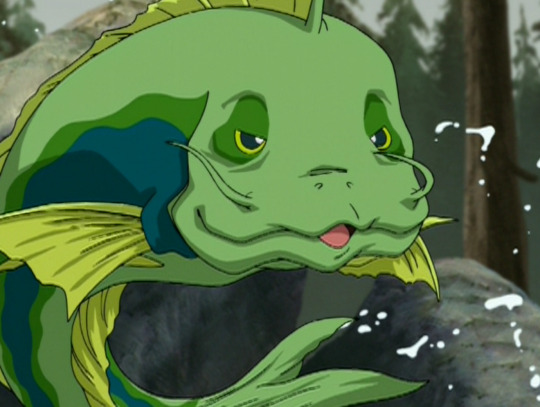
We start this episode off with a potential love interest for Sokka.
I had completely forgotten that Katara used to have a necklace. I'd also completely forgotten that she'd lost it. When did she lose it?

Aang-o-vision has a pretty heavy rose-tinted filter - literally.

Told you it was a love interest.
The NOISE Sokka makes when the fish slaps him! I love it. Hang on I'm going to rewind and listen to it again.
Yep. Still as good the second time.
Oh wow! Aang just got Momo-zoned. Gotta say I'm not a fan of a romantic relationship between Aang and Katara at this point, so I'm all for some Momo-zonage.
Platypus bear! Finally some hybrid animals. I was beginning to wonder if that would ever come back.

Is this guy a martial arts master or an idiot?
I'm leaning towards idiot.

Friendly reminder of Appa's size.
That's a lot of molars. No canines or incisors? Guess he's an obligate herbivore.
Is sniffing eggs something that people do? I get sniffing melons or other produce, but eggs?
Yep. Floppy hat guy is an idiot.
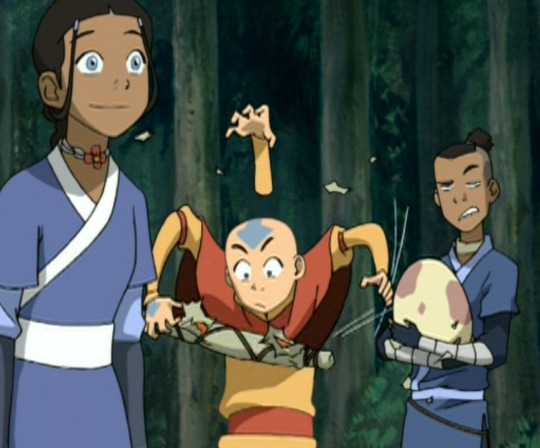
Aang buddy you might want to get that checked out.
And with a mighty squelch, the egg fulfills this episode's Beat Up Sokka quota.
Appa shakes!
Those are weird ducks.

I don't know a thing about anime, but that's the most anime-looking guy I've seen in this show. Is this show an anime?

Meng-o-vision is red-tinted. Probably doesn't bode well.
Also, Meng could give Zuko some lessons on how to style Pipi longstocking hair. Someone with more photoshop skills than me needs to make a Zuko with Meng hair.
"Don't be modest, they're huge!" Presented without comment. I'm not going to say a thing. But we all thought it.
Katara is totally the kind of girl who would fall for fortune telling. We've seen (multiple times) that she is gullible. Actually, now that I think about it, we've had multiple episodes where Katara gets swept up in something a healthy dose of skepticism would have guarded her from - Jet and The Great Divide come to mind. The writers are really hammering the 'Katara is susceptible to romantic nonsense and Sokka is a science-minded skeptic' message home. Is this going to play some bigger part in the show going forward? Why else would we be on version number (arguably) 3 of this same plot?
Aang and Sokka took off their shoes, but Katara didn't. Huh.
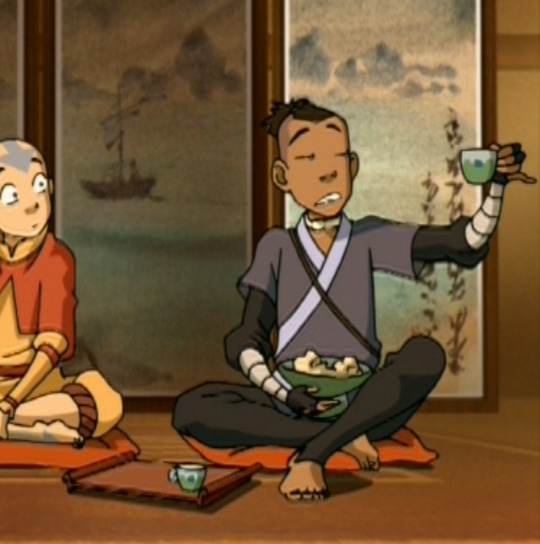
Pinky out. Classy.
I am not digging the Aang x Katara stuff in this episode. I'm with Sokka on this one - let's pretend it was a stellar bathroom break.
Aunt Wu is being unnecessarily antagonistic to Sokka. First he gets an egg on his head, then Momo steals his bean puffs, now Aunt Wu tells him his life's going to suck. I should have been more specific when I hoped for a Sokka episode. I didn't mean a beat up Sokka episode.
Aang. Priorities honey. Honestly, Aang casually dismissing his destiny after all that build up did get a laugh out of me.

A god-like figure coming to have his fortune read and only wanting to know about his love life would give me a headache too.
Add malicious signage to the Beating Up Sokka list.
"The fluffy bunny cloud forecasts doom and destruction." I bet that's the first time that sentence has appeared in the English language.
These people are stupid. Blazing Saddles style 'common clay of the New West' stupid. It would take, what, a day? to run a visual check on the volcano. But nope. Too much work. Listen to me I'm morphing into Sokka.
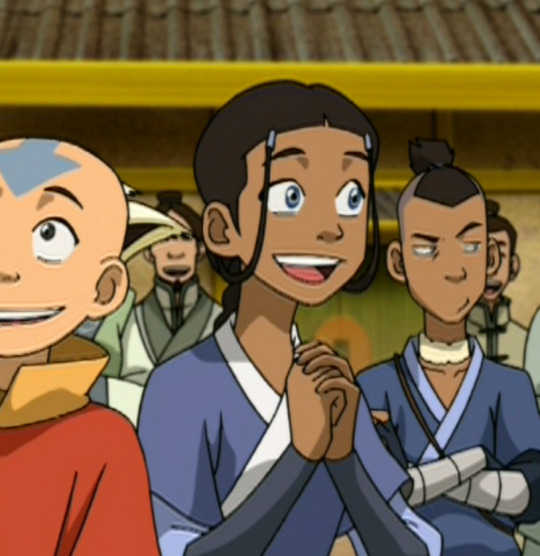
Katara giving off some serious fangirl vibes.
Katara is officially addicted to fortune telling.

Live footage of me watching these village idiots.
Add duck to the list of Things Which Assault Sokka. Gotta love those duck noises though.

Sokka is getting dangerously close to advising negging here. Also Meng deserves better. Her poor pigtails droop in disappointment. Girl has sentient hair - she deserves better.
Papaya? When you don't like papaya? Just because some old lady said so? Too far. That's not even teenage nonsense; that's tweenage nonsense. I kind of feel like sending Katara to her room.
Actually it's just like that one line Log Man said in the Jet episode. Something like 'He tells us what to do and how to think and things all turn out right.' Outsourcing your decision-making. Which, by the way, is both nonsense and cult-like. Then again, the lost boys freedom fighters pretty much worshipped Jet the way this village worships Aunt Wu, so... parallels?

So if this guy got the panda lily himself, doesn't that mean that he recently went up the mountain? Couldn't he have had a peak inside while he was up there? Would have taken an extra 20 seconds.
"Flowers are fine once you're married" Somebody get this boy to Victorian times. If he ever sees an ankle he'll self-combust.
You have a flying bison. Why don't you fly up instead of climb?

This is totally live action fire copy-pasted in to the animation. There has got to be a more technical term for that than copy-pasted.
Raise your hand if you saw the twist with the volcano coming. (I did I swear. Blue spirit was an outlier).
Forget Appa, why didn't Aang just fly up?
"They just won't listen to reason."
"But they will listen to Aunt Wu."
So the mountain comes to Mohammed. I guess talking to people in a way they understand / will listen to is a good lesson for an avatar to learn. I thought he'd learned that one in The Great Divide though. Either way this episode is getting increasingly frustrating.

Can Meng get a hug? She seems astonishingly self-aware and emotionally mature for a kid. Also way too smart for this podunk town.
I may rescind the hug in light of the stalking.

Well, it's not exactly subtle, but at least volcanic doom isn't a fluffy bunny.
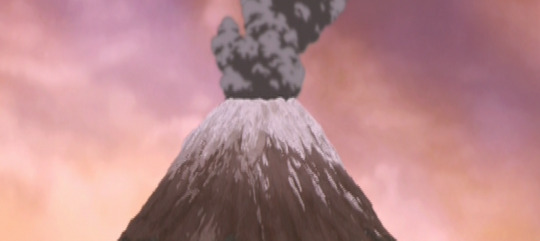
Look at those yummy purples. Finally an episode where it's light enough to have a beautiful sky. My collection of wallpapers was suffering.
Digging a lava trench might work, if the volcano is going to put out a gallon or two of lava. This must be a baby volcano.
Nevermind.
The ashes effect feels oddly 3-D.

I guess to an avatar this kind of challenge is small potatoes.
Totally ignoring the Aang x Katara stuff for a minute, I'm with Sokka on this one too, because I also had forgotten that Aang is a superbender. He didn't even need to go glowy.

If I lived in this village that redesign would absolutely give me nightmares. Are those mega claws of doom structurally sound?
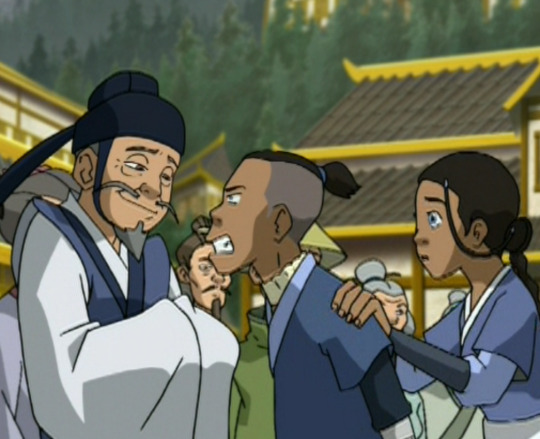
I am going to punch this man.
Aunt Wu's final speech to Aang makes me think that at least she's not indulging in her own product as it were. I suppose a con artist (whose services are free, so, just jerking around a village for shits and giggles?) is better than an actual believer?

MENG!!!
Final Thoughts
This episode has me thinking about stories. Part of the reason Katara wants to believe in nonsense like fortune telling is because she is someone inclined to listen to / believe in stories. I think the opening monologue of the first episode mentioned something about her grandmother's stories. Katara was raised on stories and very much took them to heart as more than just entertainment. And you can't blame her for believing the conceits of stories could be possible in their world, not after the events of episode one dumped the star of those stories in her lap. Just so long as she doesn't confuse a belief in stories with a belief in happy endings. There is a war going on in their world, and judging by the stuff that the show did not shy away from discussing or implying in episodes like The Southern Air Temple and The Storm, I am willing to bet good money that there will be a couple of unhappy endings ahead. Not permanently unhappy; this is a kids' cartoon. But there will probably be setbacks and disappointments.
Would Katara have astrology nonsense in her dating profile?
"The fluffy bunny cloud forecasts doom and destruction" is going to be incorporated into my daily vocabulary.
Platypus + bear are interesting choices for a hybrid animal, since a platypus is about 15 normal animals smashed together anyway. A platypus bear is the swiss army knife of animals. Or the Mr. Potato Head.
At first I thought that Aunt Wu was a benevolent meddler (see putting together the couple with the panda lily), but she also advised that one guy to never bathe, which doesn't benefit anyone in any way that I can see. So I've concluded that she's a Bumi level ("it's pretty fun messing with people") shit-stirrer instead. Her services may be free, but she manages to pay for a very big house, an assistant in Meng, and anime guy the bodyguard(?) so I guess grateful villagers give her donations? However she's doing it, she's got it made.
There was some sort of running theme with those large blue-billed ducks that lived in the village. If that was meant to have more meaning than just a running visual gag, I didn't pick up on it.
Meng had a surprising amount of depth and insight for what (I assume) is a one-episode character. Stalking aside, I liked her.
This episode's humourous look at the stupidity of the village (in fact the science denial of the village) is not as funny as it would have been in a pre-covid denial, pre-antivax, pre-"global warming is a hoax" world. A shallow viewing of this episode is still funny because the villagers are just SO dumb (except Meng), but the more you think about the villagers' actions and the conclusions they reach at the end of the episode (to not change AT ALL - at least the tribes made up in The Great Divide, a similarly idiot-filled episode), the more you morph into Sokka. These people have denied reality so hard that it's frustrating rather than funny to watch. Their head in the sand approach is not cute anymore.
I really wanted to like this episode. Like I said before, I wanted a goofy fun episode after the one-two punch of the last two episodes, but this one rapidly went from goofy to frustrating. I can't tell if it's because I'm not the target audience (i.e. too adult) or if it's because much of the world is currently drowning in various forms of misinformation and science denial. I know this episode isn't supposed to be deep - it's supposed to be setup for Aang & Katara as a (hopefully very distant) couple. That's all. And the message at the end about shaping your own destiny (i.e. taking an active part in your life) is a good message, and thematically relevant to the avatar, who presumably is at least somewhat responsible for shaping the whole world's destiny. But damn if this episode doesn't make my teeth itch.
Pros: Sokka had some great lines. Appa got to shake. There were pretty backgrounds. The noise Sokka made when he got slapped by the fish was a thing of beauty.
Cons: Aang and Katara are not allowed to date until they're 35. I will smack each villager individually upside the head with a science textbook. Meng deserved better.
Maybe I'm just not in the mood for this episode. I'll stick it on the rewatch list just for the Sokka fish noise.
#atla#avatar: the last airbender#the fortune teller#it should be THREE words fight me#avatar the last airbender
38 notes
·
View notes
Text
Preventing and curing tumors.
And on the last time sauna hot using for curing and preventing tumors. Tumor is tissue of cell , which are reproducing is not depending on from organism. These cells are loosing specifical effects, charactering for an every organism, and speed for reproducing is high,than in healthy cells. And these cells are not stable and dead of affecting of high temperature.And scientists found,that a cancer cell will dead ,thus temperature rising on 40 C a body. A healthy cells are usually perceiving this temperature barrier. And rising temperature affecting on rising immune processes in organism. And thus a stop chill in sicked patient and need to low temperature in high risk for organism. But not in 37-37.8 C as artificial lowering needing,that harmful for you. And not taking part if nature will fight with this temperature as fighting infection, just enter on extreme cases. And artificially rising temperature for body, you can kill lots of diseases agents,thus sauna is artificial rising temperature. But this is temporary event, at dry sauna hot you can rise temperature till 38-40C, that on begin skin warming , normal temperature is in inside organs, after within 5 minutes, temperature for skin not changing, but rising in inside organs temperature.
And on West Europe countries are often opening hospitals,where curing cancer with sauna. And this is ability to combine with other procedures, and getting good results. What is happening with tumor cells? Damaging they are by affecting a high temperature , blood circulation increasing ,thus oxygen rising delivery to the tissues, improving protection organism effects, which entering in fighting with foreign cells, inside environment changing, she is not benefit for tumors cells living, and forming, suppressing rots processes,thus they are reasons for tumors forming, but not an individual reason, but importance. And a few kinds for sarcomas too affecting good of sauna hot. But better to prevent disease, than to cure. Thus nature given for you best gift and preventing for tumors, and more move,. active, use healthy diet,, add unloading days, check skin for hard forming, that strange hardening on the skin needing in checking, use clay therapy, that better to prevent tumor on begin ,that lots of cancer breast is dissolving of clay compresses. Activity drink fresh beet, carrot juices , as after sauna drinking these juices, a liquid fast assimilating and if organism lost lots of humidity. Hot sauna use with contrast procedures, they are improving blood circulation, that helping fighting with stagnations , and improving work for CNS , endocrine glands. and they are beginning working consistent , rising immunity, common organism energy.
Enjoy move and walk and buy any of mine designed items to this post.
https://www.redbubble.com/people/julia-valga/shop?artistUserName=julia-valga&asc=u&collections=3426077&iaCode=all-departments&sortOrder=recent
from Valga s health news,gardening,and cooking ,and beauty . https://ift.tt/EeMps2I
via https://ift.tt/Az2WT8i
0 notes
Text

In “View of Delft” (Circa 1660), Vermeer hangs the sky with low cumulus clouds. He paints dampness as well as light. Art work by Johannes Vermeer/Courtesy Mauritshuis/Rijksmuseum
The Art World: The Ultimate Vermeer Collection
A bravura show at the Rijksmuseum displays more of the Dutch Master’s work at once than he himself ever saw.
— By Rebecca Mead | February 20, 2023
In the spring of 1914, James Simon, an art collector in Berlin, was approached by a London-based dealer with a proposition: Would he accept two hundred and fifty thousand dollars for a work in his collection, Johannes Vermeer’s “Mistress and Maid”? The would-be buyer was Henry Clay Frick, the American industrialist, who in the late nineteenth century had embarked on an acquisition binge of Old Masters, and who already owned two works by the seventeenth-century painter from Delft. Simon’s answer was definitive: although he had received equally lavish offers from other buyers—Frick was far from alone in his desire to gild his Gilded Age fortune with Golden Age masterpieces—he would not part with the painting. Five years and a crippling Great War later, however, Simon found himself in a weaker bargaining position, and for nearly three hundred thousand dollars—the equivalent of roughly five million dollars today—“Mistress and Maid” was shipped across the Atlantic to Frick’s mansion, on Fifth Avenue, where its new owner enjoyed only a short while in its company before his death, in late 1919. The painting—which depicts a lady seated at a table with a writing set, interrupted by a maid holding a letter—has remained at the mansion more or less undisturbed ever since. Frick turned his home into a museum bearing his name, and it has long been its policy not to lend his acquisitions to other institutions.
In 2021, when the Frick started renovations at the mansion and moved its collection off-site, a chink of light in the institution’s tightly shuttered terms was spotted: during this interregnum, the works could finally travel. “Mistress and Maid”—along with the Frick’s two other Vermeers, “Officer and Laughing Girl” and “Girl Interrupted at Her Music”—has now recrossed the Atlantic, returning to the Netherlands for a landmark show at the Rijksmuseum, in Amsterdam. The Rijksmuseum has corralled enough Vermeers to make the most hard-hearted of robber barons swoon—twenty-eight paintings, out of an acknowledged thirty-six or thirty-seven surviving works by the artist, who may have produced no more than fifty in his short lifetime. (Vermeer died suddenly in 1675, at the age of forty-three.) As Taco Dibbits, the general director of the Rijksmuseum, points out, the exhibition gathers more Vermeers in one place than Vermeer himself ever had the opportunity to see.
“Mistress and Maid,” which Vermeer painted sometime in the mid-sixteen-sixties—and which used to hang in the West Gallery of the Frick mansion, near works by Rembrandt and Constable—now has a wall of its own, at the heart of the exhibition. At right angles to it hangs “A Lady Writing,” which was acquired in 1907 by another art-hungry American, John Pierpont Morgan, and is now in the collection of the National Gallery, in Washington. (The National Gallery held its own blockbuster Vermeer show in the mid-nineties, bringing together what was then an unprecedented twenty-one works.) The two paintings have thematic and stylistic commonalities. Each shows a fair-haired woman, finely dressed in a yellow satin jacket and seated at a table, with a pen in her right hand and a sheet of paper at the ready. Each displays Vermeer’s uncanny command of optical effects, with a dissolving focus on the fur trim of the jacket and a sheeny light reflected from a pearl earring. A blue tablecloth is rucked up in almost identical disarray, a circumstance that would be nothing but an annoyance to an actual letter writer—who doesn’t prefer to lay paper on a smooth surface?—but which reminds a viewer that these are carefully staged scenes, with the folds of those draperies as deliberately arranged as the garments of a Renaissance Madonna. It is peculiarly moving to see these two works, which were painted within two years of each other, in juxtaposition. A viewer can take in one, and then the other, with a turn of the head no greater than that of the woman represented in either painting. Between them, these works consumed perhaps a year of Vermeer’s labor—a scrupulous rendering of bourgeois appurtenances and a faithful imagining of internal lives, which might better be described as an act of devotion.
The Rijksmuseum show, which extends across ten galleries in the museum’s special-exhibition wing, is organized thematically—Vermeer’s use of musical instruments; Vermeer’s depiction of gentleman callers—with works from differing periods placed together to show them to their best effect, like artfully rumpled drapery. (The gallery design, by Wilmotte & Associés Architectes, is similarly deft: extensive velvet drapes muffle the murmur of visitors, while the walls are painted in rich, dark colors lifted from a seventeenth-century palette.) A less than strict chronology also orders the display, which begins with Vermeer’s only two known exterior scenes: “The Little Street,” one of four works by the artist in the Rijksmuseum’s own collection, and “View of Delft,” which was borrowed from the Mauritshuis, in The Hague, and was painted in about 1660. The latter work, a cityscape in which the red-roofed town appears as a horizontal sliver between glimmering water below and a wide swath of sky above, inspired the rediscovery, beginning in the eighteen-sixties, of Vermeer, whose reputation had languished in the preceding two centuries. Its subject is light, which, as the artist expertly renders it, turns the spire of the Nieuwe Kerk a pale buttercream. But the painting also conveys the sensation of atmospheric humidity. In a catalogue essay, Pieter Roelofs, one of the show’s curators and the head of paintings and sculpture at the museum, points out that Vermeer hangs this sky with low cumulus clouds of a sort that were almost never represented by his contemporaries. In this canvas, as in “The Little Street,” with its weeping brickwork and stained whitewash, Vermeer paints dampness as well as light.
One of the best-known facts about Vermeer is how little is known about him; few documents survive him, and there are no contemporaneous descriptions of his methods, or accounts by his sitters. There are no drawings by him, or any definitive likenesses of him, though the three-quarter profile of a figure in an early work, “The Procuress,” suggests that it may be a self-portrait. It’s not the kind of sublimely refined figure one might imagine Vermeer to have been, however; this man is a sly, grinning onlooker to a lewd brothel scene, in which a soldier is putting a coin in a young woman’s open palm with his right hand and cupping her breast proprietorially with his left. This large canvas, which Vermeer painted when he was in his early twenties, is on loan from the Staatliche Kunstsammlungen Dresden; it shares a gallery with several other paintings from the beginning of Vermeer’s career, when he was experimenting with religious and mythological themes in various styles, among them Italianate. Aspiring Vermeer completists based in America or Europe will be grateful that the Rijksmuseum has included “Saint Praxedis”—a work, only in the past decade confirmed to be by Vermeer, that is usually displayed in the National Museum of Western Art, in Tokyo. An uninspired copy of an uninspiring painting by Felice Ficherelli, the work—which depicts a sweet-faced saint wringing from a sponge the blood of a nearby martyr who has just been decapitated—would hardly justify a trip to Japan.
Little is known about Vermeer’s painting of St. Praxedis—the attribution hinged in part on the fact that the canvas bears the signature “Meer 1655.” But Roelofs and his co-curator, Gregor J. M. Weber, who is the Rijksmuseum’s head of fine and decorative arts, suggest that scholarship has in fact uncovered a considerable amount of detail about Vermeer’s life, beliefs, and practices. Of particular interest is an inventory of household objects made after his death, many of which Vermeer used and reused in his paintings, like the costumes and props kept by a travelling theatrical company: curtains, chairs, Oriental carpets, the yellow jacket with its fur trim. There is no trace of the lenses or other optical devices that many critics (and the artist David Hockney) have argued Vermeer must have employed. Weber, though, proposes that Vermeer obtained a camera obscura—in which a chink of light in an otherwise shuttered chamber produces an inverted image of the outside world—from a Jesuit church next door to his house. (The Jesuits had embraced the device as a tool for observing divine light.) Weber found a drawing, made by one of the priests, Isaac van der Mye, that features idiosyncrasies of the camera-obscura technique.
Mostly, however, there are only the paintings to go on. High-tech analyses, at the Rijksmuseum and elsewhere, have uncovered sometimes surprising evidence about Vermeer’s methods. A single gallery is dedicated to “Girl Reading a Letter at an Open Window,” on loan from Dresden. Generations of museumgoers have known the work as a virtuoso exploration of perspective: a drawn curtain in the foreground reveals a rug-draped table, beyond which stands a girl with a bare wall behind her. More than forty years ago, X-ray technology revealed that behind the girl’s head Vermeer had originally placed a large painting of a cupid, which had been covered up; in 2017, further analysis determined that the overpainting had been done decades after Vermeer’s death. The cupid painting has now been painstakingly uncovered, and it takes up a quarter of the canvas, offering an unsubtle indication of the girl’s thoughts. The painting, though, is most mesmerizing in its tiniest details, such as the points of light on the silken ends of the curtain’s tassels. An exquisite reflection of the girl’s head in the open window is a visual doubling that also poses a question: Could she be of two minds about the love letter she is reading, the cupid’s looming presence notwithstanding?
One way to insure that your show has a record-breaking count of Vermeers is to be inclusive in your accounting. From the National Gallery comes not just the small, fabulous “Girl with the Red Hat”—whose gamine subject glances over her shoulder with an expression that somehow falls on the border between total confidence and total unease—but also “Girl with a Flute,” a figure with similar features less finely rendered. The National Gallery recently downgraded “Flute” to “Studio of Johannes Vermeer,” even though nothing is known of the artist’s having had pupils or associates of any sort. The National Gallery contends that its analysis of the paint and the brushwork suggests a less skillful hand than Vermeer’s; the Rijksmuseum counters that similar deficits can also be found in other, uncontested works by Vermeer.
Across the gallery is another attribution puzzle. The delicate “Lacemaker,” usually housed at the Louvre, has been hung alongside “Young Woman Seated at a Virginal,” whose authorship was questioned until, among other things, it was determined that the canvas had a weave matching that of the Louvre painting, and likely came from the same bolt. (“Young Woman Seated at a Virginal” is the only mature work by Vermeer to be in private hands; it belongs to Thomas Kaplan, an American billionaire businessman, and his wife, Daphne Recanati Kaplan, who also own the largest private collection of works by Rembrandt. Unlike Frick, Kaplan and his wife do not live with their art; they have gathered their paintings and drawings as the Leiden Collection, which operates as an Old Master lending library.)
The exhibit has a few unfortunate absences, including one of Vermeer’s most resplendent compositions, “The Art of Painting,” which depicts a painter working on a model posing as Clio, the Muse of history, in a studio more sumptuous than Vermeer could ever have afforded, with black-and-white marble floor tiles and a brass chandelier. The painting’s owner, the Kunsthistorisches Museum, in Vienna, declined to lend it, citing in part its fragility (though it travelled five times between 1999 and 2004). The Louvre’s other Vermeer, “The Astronomer,” had already been promised to the Louvre Abu Dhabi. The pendant piece to it, “The Geographer,” on loan from Frankfurt, is therefore the show’s only image of a solitary man. The light from a window falls on his globe, his papers, and his forehead, “emphasizing the scientist’s intellectual focus on the world,” according to the wall text nearby.
Vermeer’s greater fascination was with the world of women—mistresses and maids alike. “Girl with a Pearl Earring” is on short-term loan; she goes back to the Mauritshuis at the end of March, two months before the exhibition closes. If Vermeer’s more accessorized interiors have their contemporary, bastardized equivalents in curated Instagram posts, “Girl with a Pearl Earring” is a paparazzi shot—its subject looks startled and not especially gratified by the attention. In “Woman in Blue Reading a Letter,” both the subject’s capacious robe and the shadows on the wall behind her are painted—like the pearl girl’s head scarf—with precious ultramarine pigment. This costly choice lends a celestial touch to the mundane, an effect that Vermeer also employed when rendering the lead panes on the window of “Young Woman with a Water Pitcher,” which is owned by the Metropolitan Museum. (That painting, and two of the Met’s other Vermeers, have stayed in New York, either because they are too fragile to travel or because the terms of their bequest forbid it, although the Met has lent its two remaining Vermeer works.) In “Woman in Blue Reading a Letter,” the figure rests her arm on a swelling belly, suggesting that she is pregnant—as Vermeer’s wife, Catharina Bolnes, who bore fourteen or fifteen children in twenty-two years, was for most of their marriage. Scholars are justified in characterizing Vermeer’s works—created in a domestic context that must often have been chaotic—as representing idealized moments of calm. But only a critic who has never been pregnant would look at a woman who appears to be in her third trimester and see stillness. The woman in blue is gripping the letter tightly with both hands—a map on the wall could signify that her partner is away at sea—and, in addition to her roiling emotions, she must be feeling the kicks and squirms of an imminent newcomer.
The jewel of the Rijksmuseum’s own Vermeer collection, “The Milkmaid,” is given a room of its own—something the young model who posed for the painting most likely did not enjoy. “The Milkmaid” is an exploration of minimalism, three hundred years avant la lettre. A recent analysis of the painting’s surface revealed that Vermeer painted over a row of jugs that once hung behind the milkmaid’s head, leaving a bare wall with the tonal nuances of a Morandi. The wall’s surface is rendered with infinite care, its nails and holes painted in sharp relief. The graduation of shadow and light contributes to the sense of verisimilitude, though Vermeer adjusts optics for the sake of art by painting the jigsaw piece of wall between the jug and the milkmaid’s arm a brighter hue, the better to accentuate her gesture. The eye is tricked into believing that it sees the world reproduced; what it actually sees is the world enhanced.
The viewer’s vantage is that of someone seated slightly below the standing milkmaid, granting her a sturdy monumentality, her humble work elevated and dignified. She is a remarkable presence—worth waiting one’s turn to lean against the velvet-covered guardrail that protects each painting, and taking a moment to commune with her. Critics have noted that a tiny cupid appears on a tile edging the wall behind her. Perhaps Vermeer intended viewers to infer that his milkmaid, too, had love on her mind. But who’s to say that she is not, rather, reflecting on the task of pouring milk from a heavy jug—on the care that she must take in doing so, on the strength in her young arms? Perhaps she is thinking of neither love nor work, and is instead reflecting on how the slow, perpetual flow of milk serves as an endless measure of time—just as it appears to us now, as we regard her in her reverie. Like Vermeer’s other women, the milkmaid evades trite allegory. The light falls on her forehead, too. ♦
— Published in the print edition of the February 27, 2023, Issue, with the headline “Dutch Treat.”
0 notes
Text

Roof Systems in High-Performance Homes
When we think about energy efficiency in a high-performance net zero home or passive house, we think of super-insulated walls, triple- or quad-glazed windows, cutting-edge HVAC systems, Energy Star appliances, and LED lighting. Often overlooked are the roof systems that will keep hot or cold air in.
More than 85% of Canadian homes have poorly designed or failing roofs. Many have dark, non-reflective materials that absorb rather than reflect heat. With a heat-absorbing roof, rooftop temperatures can get 32 to 38°C hotter than the outside air.
Energy-efficient roof design
The pitch, shape and aesthetics of the roof become a significant design element influencing overall appearance of the building. A significant factor in many areas is the weather. Heavy snowfall, torrential rainforest downpours, strong winds and a high bushfire risk (BAL 29 and more) in wooded areas should be considerations in the roof's design.
Another consideration is solar panels, and the optimal orientation. The BC Energy Step Code is pushing local Canadian city and municipal governments to have all new construction Net Zero Ready by 2032. Your roof can not only generate renewable power for your family; it can also collect and heat your water.
Choosing roofing materials
Here's a quick introduction to the most common roofing materials used in high-performance homes on BC's West Coast:
"Cool roof" shingles are asphalt shingles that have been engineered for higher solar reflectance and thermal emittance properties. Shingles with a higher solar reflectance reflect more sunlight and allow less heat to transfer into your home. Shingles with higher solar reflectance values are considered “cool” products, and these can achieve ENERGY STAR certification.
Permanent metal is very strong and long-lasting, holds up well against rain and wind storms, or big dumps of snow; and it's non-combustible, providing a barrier against sparks from bushfires. Modern standing seam metal roofing offers a range of design options, including a wide range of colours and hidden fasteners. Metal roofs require virtually no maintenance, and have a life expectancy of 40 to 70 years.
Terracotta tiles, made from kiln-fired natural clay, remain a popular choice for high-end homes. Combined with super-insulation, tiles are an excellent material for a net zero home or passive house. The tiles are finished with a glaze to lock in the colour, so they age very well. Clay tiles are made from subsoil, one of the most abundant resources on the planet. Lighter shades of terracotta reflect the sun’s heat, which keeps your home cooler during the summer.
Concrete tiles are wind resistant and fire-resistant, and they don’t decay under wet conditions. Concrete's most attractive feature is price. But weight is its biggest drawback, and the house needs to be engineered to support that weight.
Genuine slate tile roofing is a classic, known for its durability. Hard slate, like a grayish-black Buckingham slate, can last 150 to 200 years; and even softer slates have a life span of 75 to 90 years. Slate is mined, and most of it comes from Italy. It's very resistant to BC's rain storms and freezing temperatures, and it's fireproof. Like concrete tiles, slate tiles are heavy.
Synthetic slate shingles look indistinguishable from real slate from the curb. The shingles are manufactured from recycled materials. Synthetic slate shingles costs less than real slate, and they are very lightweight. It should provide 40 to 50 years of service.
Read more about roof systems for high-performance homes.
0 notes